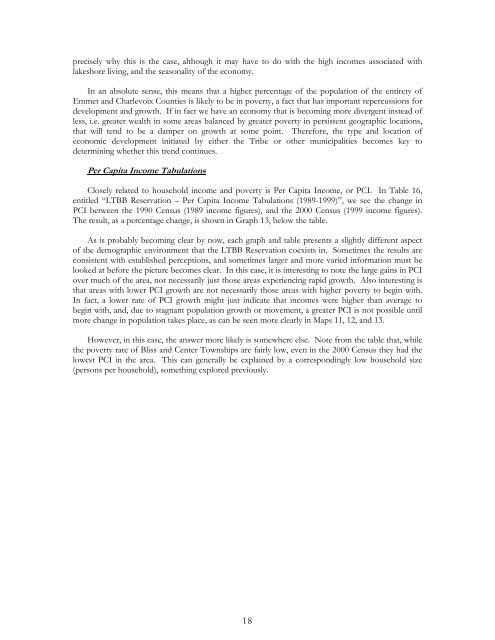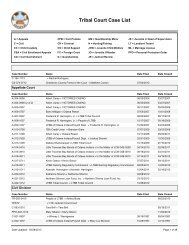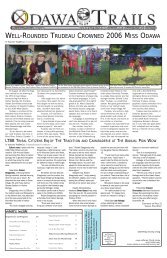LTBB Master Land Use Plan - Little Traverse Bay Bands of Odawa ...
LTBB Master Land Use Plan - Little Traverse Bay Bands of Odawa ...
LTBB Master Land Use Plan - Little Traverse Bay Bands of Odawa ...
Create successful ePaper yourself
Turn your PDF publications into a flip-book with our unique Google optimized e-Paper software.
precisely why this is the case, although it may have to do with the high incomes associated with<br />
lakeshore living, and the seasonality <strong>of</strong> the economy.<br />
In an absolute sense, this means that a higher percentage <strong>of</strong> the population <strong>of</strong> the entirety <strong>of</strong><br />
Emmet and Charlevoix Counties is likely to be in poverty, a fact that has important repercussions for<br />
development and growth. If in fact we have an economy that is becoming more divergent instead <strong>of</strong><br />
less, i.e. greater wealth in some areas balanced by greater poverty in persistent geographic locations,<br />
that will tend to be a damper on growth at some point. Therefore, the type and location <strong>of</strong><br />
economic development initiated by either the Tribe or other municipalities becomes key to<br />
determining whether this trend continues.<br />
Per Capita Income Tabulations<br />
Closely related to household income and poverty is Per Capita Income, or PCI. In Table 16,<br />
entitled “<strong>LTBB</strong> Reservation – Per Capita Income Tabulations (1989-1999)”, we see the change in<br />
PCI between the 1990 Census (1989 income figures), and the 2000 Census (1999 income figures).<br />
The result, as a percentage change, is shown in Graph 13, below the table.<br />
As is probably becoming clear by now, each graph and table presents a slightly different aspect<br />
<strong>of</strong> the demographic environment that the <strong>LTBB</strong> Reservation coexists in. Sometimes the results are<br />
consistent with established perceptions, and sometimes larger and more varied information must be<br />
looked at before the picture becomes clear. In this case, it is interesting to note the large gains in PCI<br />
over much <strong>of</strong> the area, not necessarily just those areas experiencing rapid growth. Also interesting is<br />
that areas with lower PCI growth are not necessarily those areas with higher poverty to begin with.<br />
In fact, a lower rate <strong>of</strong> PCI growth might just indicate that incomes were higher than average to<br />
begin with, and, due to stagnant population growth or movement, a greater PCI is not possible until<br />
more change in population takes place, as can be seen more clearly in Maps 11, 12, and 13.<br />
However, in this case, the answer more likely is somewhere else. Note from the table that, while<br />
the poverty rate <strong>of</strong> Bliss and Center Townships are fairly low, even in the 2000 Census they had the<br />
lowest PCI in the area. This can generally be explained by a correspondingly low household size<br />
(persons per household), something explored previously.<br />
18










